Imagine walking down a peaceful street, surrounded by well-kept homes, when suddenly your eyes are drawn to one particular house – a vibrant red door that demands attention. You may not realize it, but that bold choice of exterior color is not just a personal preference; it’s a strategic choice aimed at deterring potential intruders. In this article, we will explore the fascinating world of color psychology and how the colors we choose for our homes can have a powerful impact on our safety and security.
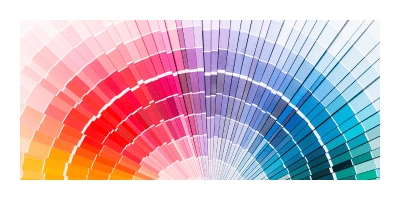
The Impact of Color Psychology on Intruders
When it comes to home security, we often think about alarm systems, locks, and surveillance cameras. However, one aspect that is often overlooked is the role that color can play in deterring intruders. By understanding the psychological effects of color and how it can influence human behavior, we can use it strategically to create a safer and more secure environment. In this article, we will explore the different colors that can discourage intruders, their associations and meanings, and how they can be effectively applied to promote safety.
Understanding the psychological effects of color
Color has a significant impact on our emotions, mood, and behavior. Different colors evoke different feelings and perceptions, and this can be harnessed to not only enhance the aesthetic appeal of our homes but also to create an atmosphere that discourages intruders. By understanding the psychological effects of color, we can make informed choices in selecting the best colors to deter unwanted visitors.
How color can influence human behavior
Colors have the ability to influence human behavior in various ways. They can evoke emotional responses, affect our perception of space, and even alter our physiological reactions. For example, bright and vibrant colors can stimulate feelings of energy and excitement, while neutral and earthy tones can create a sense of calmness and relaxation. By strategically using color, we can manipulate the perception of space, evoke desired emotions, and ultimately deter intruders.
Exploring the role of color in deterring intruders
Now that we understand the psychological effects of color and how it can influence human behavior, let’s explore the different colors that can effectively deter intruders. By utilizing the right colors in our exterior design, we can create an environment that discourages potential trespassers and enhances the overall security of our homes.
Colors That Discourage Intruders
Bright and vibrant colors
Bright and vibrant colors are attention-grabbing and can create a sense of energy and vitality. These colors include shades like red, orange, and yellow. Their intense hues can make a space feel alive and dynamic, which can be intimidating to intruders. Additionally, these colors are highly visible and can easily draw attention to any suspicious activity.
Neutral and earthy tones
Neutral and earthy tones, such as beige, taupe, and brown, create a calm and soothing atmosphere. These colors can give the impression that a property is well-maintained and occupied, deterring potential intruders who prefer easy targets. They blend well with natural surroundings, allowing the home to harmonize with its environment while still maintaining a sense of security.
Dark and intimidating shades
Dark and intimidating shades, like black and deep shades of blue or green, can instill a sense of mystery and danger. These colors create a visually imposing presence and deter intruders who may perceive the property as more difficult to access or navigate. When used strategically, these colors can enhance the perceived security of a home.
The Role of Red
Associations and meanings behind the color red
Red is a powerful color that evokes a range of emotions and associations. In nature, red is often used as a warning color to signal potential threats or danger. By incorporating red into our exterior design, we can tap into these associations and create a sense of alertness and caution among potential intruders.
How red triggers a sense of danger and urgency
Red has been shown to increase heart rate and stimulate the nervous system. This physiological response to red can trigger a sense of danger and urgency, making intruders think twice before attempting to enter a property. When strategically applied, red can serve as a powerful deterrent, signaling that the property is monitored and protected.
Using red strategically to deter and warn intruders
To effectively use red as a deterrent, it can be applied to elements like doors, fences, or signage. Red front doors, for example, can create a strong visual focal point and send a message that the property is secure. Red signs with messages like “Warning: Surveillance Cameras in Use” can significantly deter potential intruders, as they emphasize the presence of security measures.
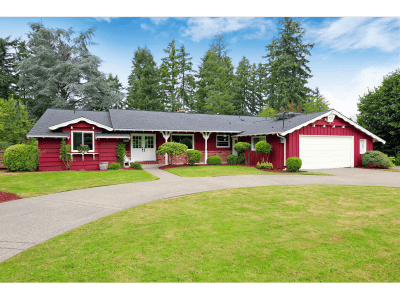
The Influence of Yellow
Psychological impact of the color yellow
Yellow is associated with positivity, optimism, and attention-grabbing qualities. It is a vibrant color that can enhance visibility and draw attention. These characteristics make yellow an excellent choice for deterring intruders, as it creates a sense of caution and awareness.
How yellow enhances visibility and surveillance
Yellow is one of the most visible colors in the spectrum, making it an ideal choice for accent colors. When used strategically, yellow can draw attention to security features, such as cameras or motion sensor lights. By highlighting these elements with yellow, potential intruders are more likely to perceive the property as closely monitored, deterring them from attempting any unauthorized entry.
Using yellow to create a sense of caution and awareness
To effectively utilize yellow as a deterrent, consider painting elements such as fences, gates, or window frames in this vibrant color. Yellow signs or stickers near entry points can also reinforce the idea that the property is secured and under surveillance. By incorporating yellow strategically, you can create a visual environment that promotes caution and awareness.
The Strength of Blue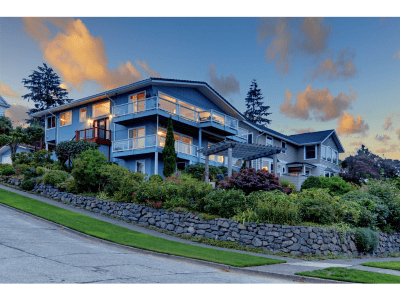
The calming and serene effects of blue
Blue is often associated with calmness, peace, and tranquility. It has a soothing effect on our emotions and can create a sense of security. By incorporating blue into the exterior design of a property, we can help create an atmosphere that discourages unwelcome intruders.
Perception of security and trust with blue
Blue is a color that is often associated with trust and reliability. It is commonly used by corporations and brands to convey a sense of professionalism and security. By utilizing blue in our exterior color scheme, we can tap into these associations and create a perception of security and trust. This, in turn, can deter potential intruders who seek vulnerable or easily compromised targets.
Blue as a color choice for fences, doors, and windows
When considering the color blue as a deterrent, think about incorporating it into elements such as fences, doors, or windows. Blue fences create a visually calm and secure perimeter, while blue doors and windows can enhance the overall aesthetic appeal while also promoting a sense of security. By using blue selectively in these areas, you can create a cohesive exterior design that deters intruders.
The Deterrent Effect of Black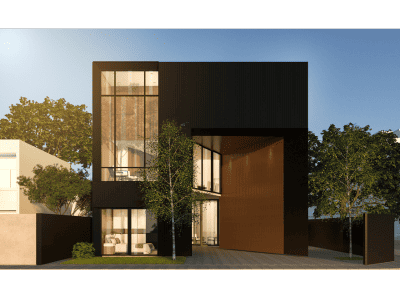
Symbolism and associations of black
Black is often associated with mystery, power, and darkness. It carries an inherent sense of danger and can create an imposing presence. By using black strategically, we can leverage these associations to deter potential intruders.
How black creates a sense of mystery and danger
Black is a color that is often associated with the unknown. When used in the exterior design of a property, it can create a sense of mystery and obscurity. Intruders may be deterred by the uncertainty and perceive the property as a potential risk. Moreover, black can also make it difficult for potential intruders to remain unnoticed since it contrasts sharply with its surroundings.
Using black strategically for a secure and imposing appearance
To effectively incorporate black as a deterrent, consider using it for elements such as gates, window frames, or even roof shingles. Black fences, in particular, create a strong boundary and can discourage trespassers from attempting unauthorized entry. By using black strategically, you can create a visually imposing appearance that communicates both strength and security.
The Defensive Power of Green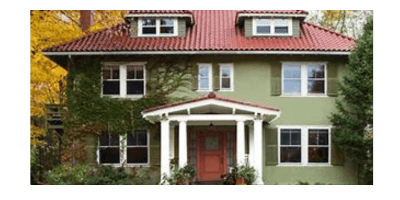
Psychological impact of green on human behavior
Green is a color that is often associated with nature, calmness, and harmony. It has a soothing effect on our emotions and can create a sense of safety. By incorporating green elements in our exterior design, we can create an atmosphere that discourages intruders.
Green as a symbol of safety and harmony
Green is frequently associated with safety and harmony due to its correlation with lush landscapes and natural environments. When utilized in the exterior design of a property, it can create a sense of peace and tranquility. This can discourage potential intruders, as they may perceive the property as one that is well-maintained, cared for, and occupied.
Incorporating green in landscaping and exterior design
To effectively incorporate green as a deterrent, focus on incorporating it into landscaping and exterior design elements. Lush green lawns, well-maintained foliage, or green accents in outdoor fixtures can contribute to an overall sense of safety and security. By creating a visually pleasing environment with green elements, you can deter potential intruders who prefer poorly maintained or neglected properties.
The Protective Nature of Brown
How brown creates a grounding and stabilizing effect
Brown is a warm and earthy color that evokes a sense of stability and reliability. It is often associated with strength and dependability. By incorporating brown into the exterior design of a property, we can create a grounded and secure atmosphere that deters potential intruders.
Using brown to convey a sense of reliability and strength
The color brown is commonly associated with reliability and strength. By utilizing it in the exterior design, such as through brown fences, doors, or exterior structures, we can communicate a sense of durability and stability. This, in turn, can deter intruders who are seeking easy targets and prefer properties that appear less secure.
Brown as a color choice for fences and exterior structures
When considering brown as a deterrent, focus on incorporating it into features like fences, gates, or exterior structures. Brown fences provide a visually secure perimeter and convey a message that the property is reliable and well-protected. By using brown strategically, you can create an exterior environment that communicates strength and stability, ultimately deterring potential intruders.
The Intruder Repellent White
The symbolism and associations of white
White is a color that is often associated with purity, cleanliness, and simplicity. It has a clean aesthetic that can enhance visibility and promote a sense of openness. By utilizing white in the exterior design of a property, we can create an environment that discourages intruders.
How white enhances visibility and promotes a clean aesthetic
White is a highly visible color that can enhance the perception of space. By using white for elements like fences, walls, or doors, we can create a visually open and monitored environment. The bright and clean aesthetic of white can deter intruders, as it conveys a sense of vigilance and cleanliness.
Using white to create an open and monitored environment
To effectively incorporate white as a deterrent, consider using it for exterior features such as fences, walls, or doors. A white fence, for example, can create a visually open space while still maintaining a sense of security. White signage can also promote a clean and monitored environment, enhancing the overall deterrence effect.
Combining Colors for Maximum Deterrence
Creating visual contrast to discourage intruders
By strategically combining colors, we can create visual contrasts that deter intruders. For example, pairing bright and vibrant colors like red or yellow with darker shades like black or deep blue can create a visually striking combination that catches attention and signals potential dangers. By creating this contrast, intruders are more likely to perceive the property as secure and actively monitored.
Strategic use of complementary color schemes
Complementary colors, those that are opposite each other on the color wheel, can be utilized to create a visually pleasing and deterrent effect. For example, pairing blue with orange or red with green can create a striking combination that draws attention and evokes a sense of caution. By thoughtfully utilizing complementary color schemes in the exterior design, we can enhance the overall deterrence factor.
Examples of effective color combinations for deterring intruders
Some effective color combinations for deterring intruders include:
- Red and black: This combination creates a visually intense and alarming effect, making potential intruders think twice before attempting unauthorized entry.
- Yellow and dark blue: Yellow draws attention and highlights important elements, while dark blue adds a sense of mystery and creates contrast.
- Green and brown: This combination taps into the associations of safety and reliability while harmonizing with natural surroundings.
- White and red: White enhances visibility and cleanliness, while red adds an element of urgency and warns of potential danger.
By strategically combining these colors, or exploring other complementary combinations, you can effectively deter intruders and enhance the security of your property.
In conclusion, color psychology plays a vital role in deterring intruders and enhancing the security of our homes. By understanding the psychological effects of color and strategically applying it in exterior design, we can create an environment that deters potential intruders. From using bright and vibrant colors to create an energized atmosphere, to incorporating neutral and earthy tones for a calm and secure environment, or leveraging the symbolism of red, yellow, blue, black, green, brown, or white, color can significantly impact the perception of security. By combining colors and utilizing complementary color schemes, we can create maximum deterrence and promote a safe and secure living space. So, get creative with your color choices and ensure that your home not only looks beautiful but also discourages intruders with the power of color psychology.
